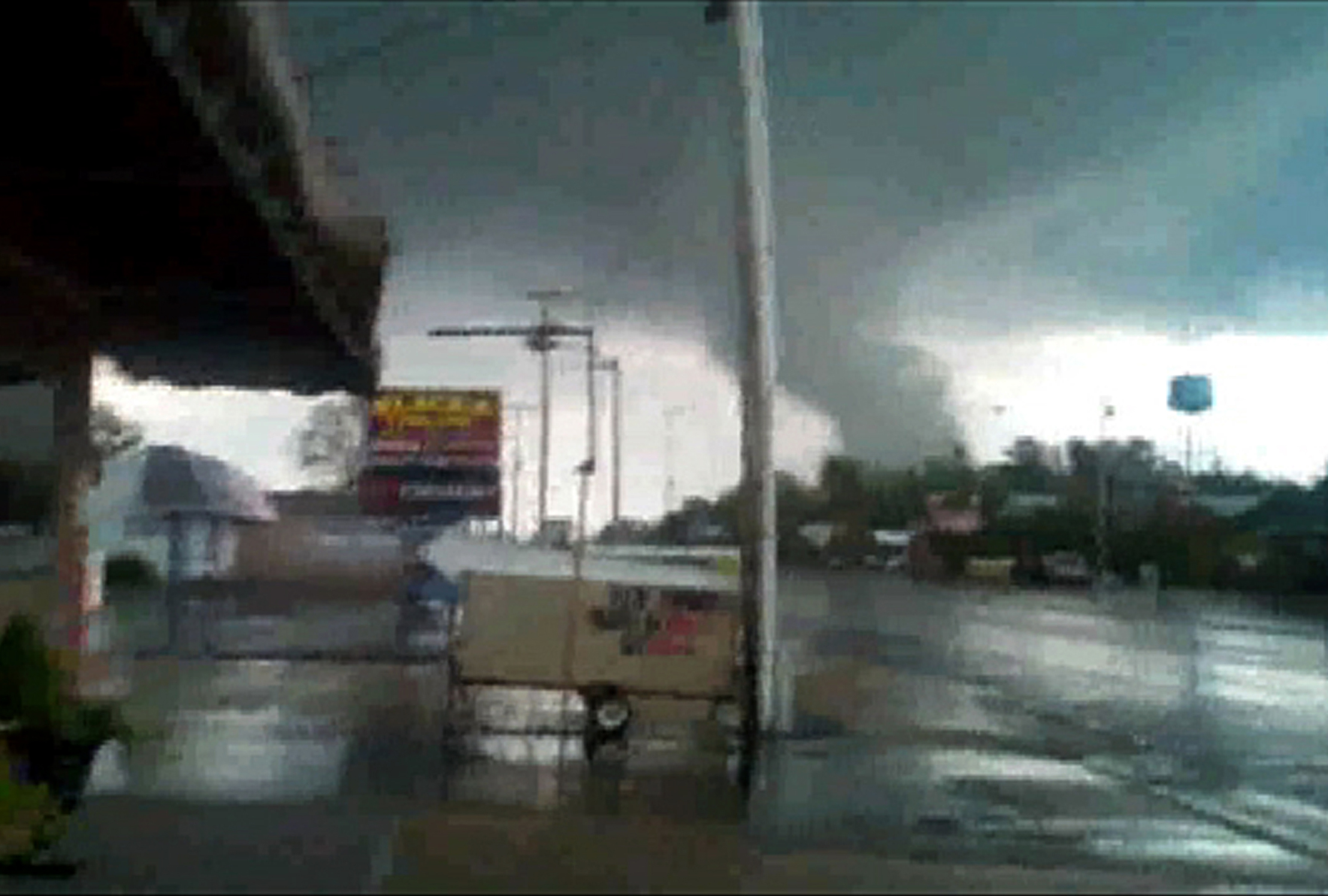The largest tornado outbreak ever recorded occurred from April 25 to 28, 2011, affecting the southern, midwestern, and northeastern United States and leaving catastrophic destruction in its wake.
Tornadoes hit parts of Alabama, Arkansas, Georgia, Mississippi, Tennessee, and Virginia and affected many other areas throughout the Southern and Eastern United States. In total, 358 tornadoes were confirmed by the National Weather Service in 21 states from Texas to New York and even isolated tornadoes in Canada. Widespread and destructive tornadoes occurred on each day of the outbreak, and April 27th was among the most prolific and destructive tornado days in United States history with a record 208 tornadoes touching down that day.
In Georgia, the governor declared a state of emergency in Bartow, Catoosa, Coweta, Dade, Floyd, Greene, Lamar, Meriwether, Monroe, Morgan, Pickens, Polk, Rabun, Spalding, Troup and Walker counties. In total, 15 tornadoes tracked across the Peachtree City forecast area, which includes most of north and central Georgia. The storms were closely covered by the media. There were pictures and footage of stores, restaurants, homes, schools, and many other buildings that were reduced to rubble. The landscape changed tremendously.
Just one year later, so many devastated homes have been rebuilt. Businesses reopened and students are back in school. Much of the rebuilding of communities, restarting of businesses, and making families "whole" again has been achieved with insurance policyholder payouts.
Now the conversation has turned to how last year's storms and the steadily increasing risk of more tornadoes affects insurance rates. Insurers take into account many cost increases, but it takes many years of weather events as rates structures are developed because weather is cyclical and these cycles must be considered over time. That means often more than 5 to 10 years.
Businesses increase prices when the cost of doing business rises. Ask your grocers about the cost of food goods, the gasoline producers about the rise in fuel costs. Ask insurers and builders about the costs related to replacing hundreds or even thousands of homes at one time.
Rebuilding a community means first comes the demolition and debris removal costs. Then the cost of building materials continues to rise, not fall. Consider that the market price of a property is not related to the cost to rebuild. This is particularly important since the housing market has declined in recent years. The cost of building a home actually rose by 45 percent from the start of 2001 through the end of 2011.
While the home is being rebuilt, homeowners insurance usually reimburses policyholders for Additional Living Expenses (ALE) as provided by their insurance policy. These expenses may continue for months while the property is under construction.
Many of these devastated homeowners and renters also require repair or replacement of vehicles damaged either by the hail associated with these storms or by crashing trees or buildings. In addition, insurers pay out money for replacement of belongings lost by homeowners and renters in tornadoes or other covered events.
These images will stay with us for many years. But while recalling the devastating damage, we are grateful for these new communities that have risen out of the damage from the storms. Insurers are at the core of rebuilding these communities and the lives of their inhabitants.
David Colmans is the executive director of the Georgia Insurance Information Service. Contact him at (770) 565-3806 or by email at dcolmans@giis.org.

